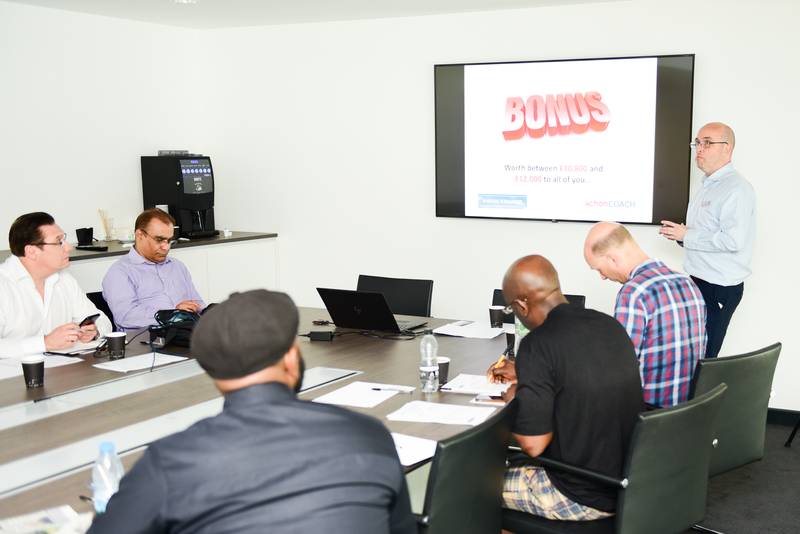As a small business owner, you juggle so many roles and responsibilities. Spinning plates becomes your norm. You may find yourself veering from one task to another as you cover every aspect of the business from customer care to marketing to accounting to business development.
But how do you know which tasks to prioritise to make your business successful? Taking stock to work out the who, what, why, when and how answers enables you to focus your attention in the most fruitful areas. Long term, it pays to stop doing and start planning.
Why is Strategic Planning Important in Small Business?

As a small business owner and entrepreneur, your head is probably brimming with short and long term goals for your company’s future. But in order to make these aims actually happen, you need to be clear about what they are, how and when you intend to reach your goals.
When you get those ideas out of your head and onto paper (or the screen), they’ll feel more real. Take the time to really think about what you want for your business. That process of putting the pieces of the puzzle together is strategic planning.
A strategic plan defines your business goals and intentions for the next three to five years. Your small business strategic plan should comprise:
- Mission statement – what’s your company’s mission, reason for existence or purpose?
- Vision statement – what are your goals and ideals?
- Values – what’s important to you (eg sustainability, accessibility, excellent customer care, innovation, best in class products)?
- Long-term goals – what do you want to achieve with your business?
- Action plans – how will you achieve those goals?
What does this process do? It gives you, and anyone in your team, direction and a clear focus. When there are dozens of things demanding your attention, refer back to your plan to work out which is most likely to move you closer to your goals.
What’s the Difference Between a Business Plan and a Strategic Plan?
A business plan gives your team and potential investors a detailed roadmap to achieving your business goals. It’s particularly important at the startup stage or when you undergo a significant transformation. You may have compiled this action plan when seeking investment.
A strategic plan builds on the business plan and keeps you on track to achieving your long term goals. It’s a brilliant tool for small businesses (whether you’re a relatively new business or longstanding) to map out your business strategy, long term plan and growth metrics.
What are the 5 Tasks in Strategic Planning?
Who’s going to make the strategic plan? Sometimes an entrepreneur (the business founder) isn’t the best person for this as they can be brilliant at the big picture ideas, but sometimes less adept at the implementation and detail. It can be beneficial to involve other colleagues or advisors in this decision-making process.
1. Gather information – before you can move forward, you need to clarify your company’s current situation. What’s the business environment like? Consult market data to identify potential opportunities or threats to your business. Get feedback from any employees and customers to find issues to address. Conduct a SWOT analysis to determine your company’s strengths, weaknesses, opportunities and threats. This will help you to identify your competitive advantage in the market, as well as potential areas to improve or capitalise on.
2. Set your long term goals and objectives – draw on all your research, strategic thinking, experience and existing business plans to determine which path to take next. Effective strategic planning involves consistency, so keep true to your company’s values, mission and vision statement. Once you know where you stand now, you can make business and financial forecasts for the next three to five years.
3. Develop the plan – now it’s time to document your strategic plan. Make sure you include:

- Key business priorities
- Objectives for the first year (you can update this for the next year)
- Smart key performance indicators (KPIs) that are specific, measurable, achievable, reasonable and timely
- Budget planning, defining which important initiatives need to be funded (such as marketing campaigns or new product development) and cashflow
- Plot your roadmap with milestones to reach over the coming months and year
4. Put the plan into action – next you need to make it happen. Communicate clearly with anyone involved so that everyone knows the role they play in this strategic action plan. Think about what needs to happen day-to-day, as well as longer term, to steer your business in the right direction.
5. Review and update – keep referring back to this action plan, using it as a roadmap to keep you focussed on the most important tasks. Remember, it’s not set in stone though. Successful strategic planning involves adaptability, so the plan needs to be reviewed and updated regularly (quarterly and annually). As external factors evolve and change, so too should your business. Over time, you’ll gain knowledge and experience, you may change direction or realise that you’ve reached the goals set in the plan. At that point, it’s time to start afresh with a new strategic plan.
How Do You Prioritise Your Plan?
This strategic business plan should accessible and understood by anyone you work with. It’s not a scary, formal document. It’s a roadmap – a series of action steps. It needs to underpin your day-to-day work and dialogue.
Use your strategic plan to inform any long or short term operational planning. Everyone working on your business needs to work together to achieve your strategic goals. Keep it as a living, organic document that informs your decision-making. With your strategic plan to hand, your small business has a much better chance of achieving success.
Need some help to focus and define your strategic plan? Book a free consultation session now
Make sure your business plan covers everything from executive summary to profitability projections and beyond.




